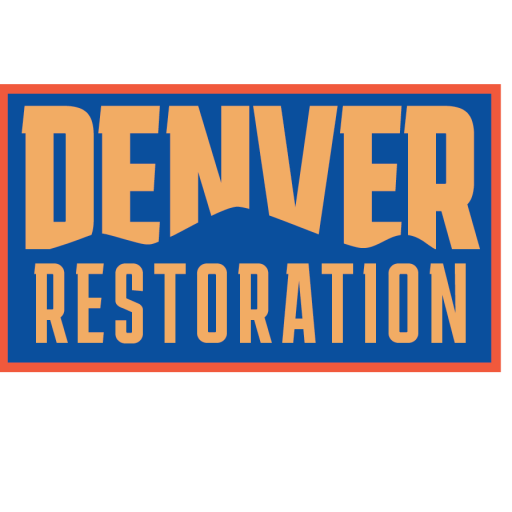Understanding Insurance Claims Amidst Natural Disasters
When nature erupts in fury, the consequential devastation often leaves property owners bewildered and overwhelmed. Fire, water, or mold damage can have a significant impact on your life or business. And the real battle begins when you have to deal with insurance claim procedures to ensure a fair claim. The process might seem complex, but it doesn’t have to be with a clear understanding and informed approach.
Demystifying the Insurance Claims Process
Navigating through the complex process of filing for disaster insurance claims can be challenging, but it doesn’t have to be intimidating. Armed with precise knowledge, the road to recovery can be smooth and manageable.
- Initial Assessment: Prompt action is paramount following a disaster. Once it’s safe, assess the extent of damage. This initial evaluation will form the basis of your insurance claim. Furthermore, swift response and damage mitigation measures can prevent any additional losses.
- Insurance Notification: Contact your insurance company as soon as possible. Provide a preliminary report of the incident and damages incurred. Remember, a timely notification can expedite your claim process.
- Documentation: The importance of thorough documentation cannot be understated. Click photos, record videos and maintain a detailed inventory of damaged items. This evidence will support your fair insurance claims.
- Professional Assistance: Seek professional help from experienced restoration services. They can assist in a meticulous damage assessment, estimation, and restoration process, ensuring your claim is supported by expert opinions.
Professional Restoration: A Stepping Stone to Fair Claims
A disaster can cause massive damage to your property. The road to recovery is often marred with numerous repair and restoration tasks. But with professional restoration services, you can not only restore your property but also strengthen your disaster insurance claims. They offer comprehensive restoration services, including damage assessment, restoration techniques, environmental, and health safety measures. Their deep understanding of local insurance and legal compliance can be invaluable in ensuring a fair insurance claim.
Fair Insurance Claims: Knowing Your Rights and Responsibilities
Understanding your rights and responsibilities is critical to ensuring a fair claim. As a policyholder, you have the right to expect prompt responses, clear communication, and fair claim settlement from your insurance company. Correspondingly, you have the responsibility to mitigate further damage, document your losses accurately, and cooperate with the insurer’s investigation.
Securing Your Future Against Disasters
As we continue to live in a world where natural disasters are a reality, securing ourselves against these events is imperative. Understanding the nitty-gritty of insurance policies, knowing the nuances of claim processes, and adopting effective disaster recovery strategies will no doubt empower us to navigate through these tough times more effectively.
Moving Forward: An Informed Approach
Disasters are a part of life, and facing them requires resilience. One key aspect of disaster recovery is ensuring a fair insurance claim. It might seem daunting, but with the right approach, right knowledge, and the right professional help, it is indeed achievable.
In the face of adversity, remember that you are not alone. There are resources available, and help is just a call away. As you step forward to rebuild and restore, let this journey be a testament to your resilience, and may it pave the way for a safer, stronger future.
Executing a Leadership Role in the Aftermath of a Disaster
As property owners, effectively managing the course of action after a disaster is a challenging but essential leadership role. Post-disaster restoration involves two main aspects: securing the property and people against further harm, and starting an insurance claim process.
The responsibility doesn’t end with just filing claims; it is crucial to follow through with the insurance company from damage assessment to claim settlement. A well-documented and substantiated claim can aid in fair and swift settlement.
- Site Security: The initial step, once it’s secure, is to safeguard your property from further damage. Cover open spaces with tarpaulins, board up broken windows, and cordon off unstable areas. These measures will protect your property from additional losses like theft, vandalism, or secondary water damage.
- Professional Site Assessment: Engaging a professional disaster restoration company ensures that all damages are thoroughly assessed and reported, leveraging their expertise to prevent overlooked or underestimated damage.
- Persistent Follow-Up: Stay in touch with your insurance company, frequently communicating and providing necessary updates.
- Evidence: Preserve any physical evidence of damage where possible. This might include damaged personal property or structural components.
- Communication: Maintain concise and clear communication with your insurer, including written documents. This transparency ensures smoother negotiations and claim settlement.
The Role of Professional Restoration Services
Professional restoration service providers play a pivotal role post-disaster. They serve as an important link between property owners and insurance companies. Their expertise in Damage Assessment and Estimation, Restoration Techniques, and Environmental and Health Safety can help you recover faster and more effectively.
These firms have knowledge of insurance claims processes and regulations, allowing them to advise and assist property owners in navigating complex claims procedures. Moreover, they can document and validate the claim, increasing the chances of a complete recovery of the claim amount.
The Imperative for Disaster Preparedness
While it is important to know how to respond post-disaster, effective disaster preparedness can go a long way in reducing potential damage and speeding your recovery process. This includes understanding your insurance policy coverage, knowing key contacts for emergencies, and having a disaster response plan ready.
By staying informed and prepared, property owners can react more swiftly, minimizing damage, and expediting their return to normalcy. In this vein, understanding insurance policies and their benefits beforehand allows property owners to choose the right coverage and be aware of how to use it in the event of a disaster.
The Road to Restoration: A collaborative approach
The property damage resulting from a disaster can be devastating. But with a clear understanding of the restoration and insurance claim process, property owners can confidently navigate their way towards recovery. The shared objective is clear; restoring your property to its pre-disaster state.
Comprehensive recovery is achievable with the joint efforts of property owners, insurers, and professional restoration services. Rest assured, these entities operate with a common goal – helping property owners rebuild and restore.
Combating the Aftermath: Proactive not Reactive
Disasters bear a significant emotional and financial cost, one that increases the longer properties remain in a state of disrepair. A proactive approach to disaster recovery—understanding insurance claims, prompt damage mitigation, diligent documentation, and engaging professional services—can dramatically reduce both these costs, bringing you closer to a return to normality.
Exemplary Support
In the face of a disaster, an immediate and effective response is crucial. Capitalize on the exemplary support and expertise of a professional restoration service for an empowered recovery process. Remember, your resolution and resilience are key to overcoming these challenging times and ushering in a future that is stronger and well-prepared.

